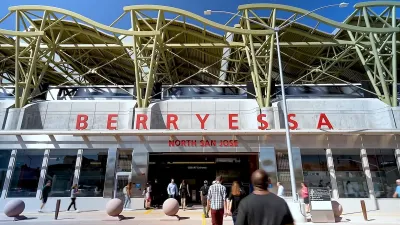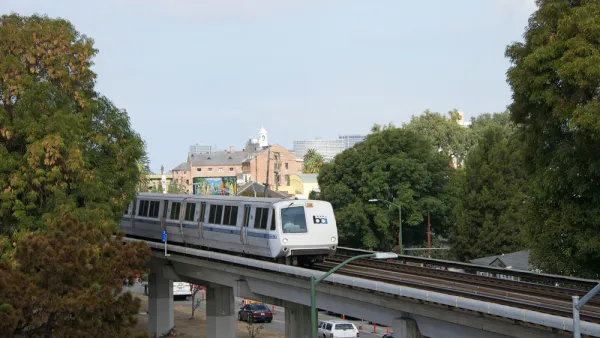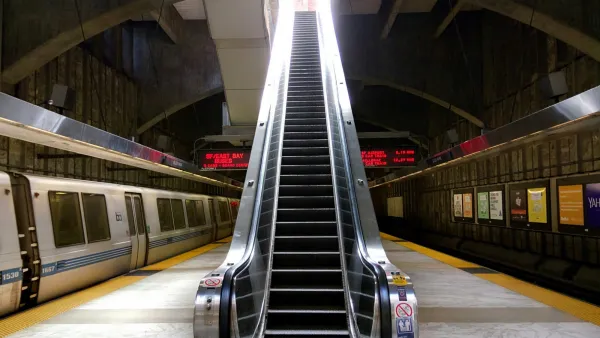The grant brings the project closer to reality, but delays and cost overruns are putting a completion date more than a decade away.

The Federal Transit Administration (FTA) will contribute over $5 billion to a project that will bring a Bay Area Rapid Transit (BART) line to Santa Clara, California, reports Joseph Geha for KQED.
Officials from the Silicon Valley city celebrated the announcement, which will contribute significantly to the estimated $12.7 billion cost of the project. “VTA’s origins estimate, in 2014, pegged the cost at $4.7 billion and aimed for a completion date in 2026. As recently as spring 2022, VTA still touted a $6.9 billion estimate before facing multiple schedule delays and ballooning cost increases to the current figure.”
The project has been in the works for close to three decades and is scheduled for completion in 2037. Much of the track will run underground. “As currently planned, the project will extend BART from its current end of the line at Berryessa Station in North San José and will run west to create four new stations: 28th Street/Little Portugal near East San José, Downtown San José, Diridon Station and Santa Clara.”
FULL STORY: Feds Commit $5.1 Billion to South Bay BART Extension

National Parks Layoffs Will Cause Communities to Lose Billions
Thousands of essential park workers were laid off this week, just before the busy spring break season.

Retro-silient?: America’s First “Eco-burb,” The Woodlands Turns 50
A master-planned community north of Houston offers lessons on green infrastructure and resilient design, but falls short of its founder’s lofty affordability and walkability goals.

Delivering for America Plan Will Downgrade Mail Service in at Least 49.5 Percent of Zip Codes
Republican and Democrat lawmakers criticize the plan for its disproportionate negative impact on rural communities.

Test News Post 1
This is a summary

Test News Headline 46
Test for the image on the front page.

Balancing Bombs and Butterflies: How the National Guard Protects a Rare Species
The National Guard at Fort Indiantown Gap uses GIS technology and land management strategies to balance military training with conservation efforts, ensuring the survival of the rare eastern regal fritillary butterfly.
Urban Design for Planners 1: Software Tools
This six-course series explores essential urban design concepts using open source software and equips planners with the tools they need to participate fully in the urban design process.
Planning for Universal Design
Learn the tools for implementing Universal Design in planning regulations.
EMC Planning Group, Inc.
Planetizen
Planetizen
Mpact (formerly Rail~Volution)
Great Falls Development Authority, Inc.
HUDs Office of Policy Development and Research
NYU Wagner Graduate School of Public Service





























